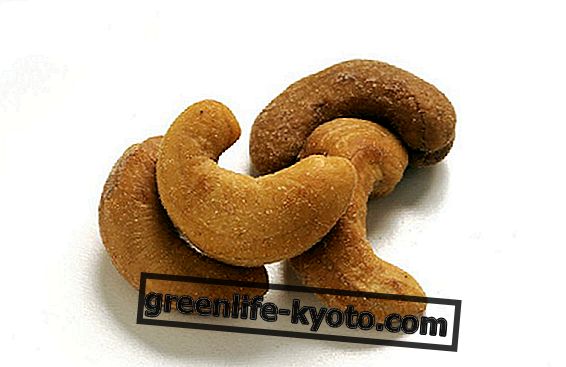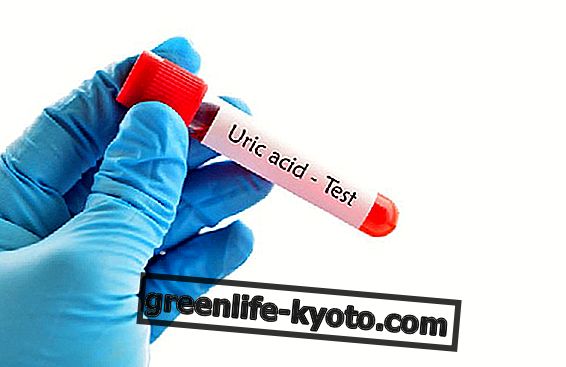Green tea ( Camelia sinensis ) belongs to the Theaceae family. Very well known for its antioxidant action, it is useful for combating cellular aging. Let's find out better.

Properties of green tea
The buds of leaves and young leaves of green tea contain the highest percentage of antioxidant principles found in nature, useful to counteract the formation of free radicals, responsible for cellular aging. The polyphenols present are anti-radicals, more powerful even than vitamin C and E.
The antioxidant action is mainly given by the flavonoids and in particular by the catechins (about 20-40% of the dry weight) that contribute to supporting the cardiac functions and contribute to maintaining a good state of health. These substances also reduce the levels of LDL cholesterol and triglycerides, thus exerting a protective action against cardiovascular diseases, atherosclerosis and coronary heart disease. It is very useful to counteract the negative effects of smoking.
The synergistic action of the polyphenolic derivatives (flavonoids, chlorogenic acid, caffeic, tannins), that is the mixture of these substances, has a superior anti- degenerative property compared to that of the individual active principles, confirming the thesis that the plant phytocomplex is much more active of individual components, isolated and purified. The set of active ingredients, in fact, is able to protect brain cells from damage typical of neurodegenerative diseases.
Researchers at the University of Tohoku, Japan, have shown that regular consumption of green tea counteracts the loss of cognitive faculties and would help prevent the onset of Parkinson's disease and Alzheimer's syndrome. A real elixir of youth for the brain; in fact it seems that regularly drinking green tea guarantees freshness and efficiency to brain cells. Not by chance, in Japan where, for centuries, green tea is a ritual, there are very low percentages of forms of senile dementia.
Several studies have shown that green tea also has a preventive inhibitory activity against carcinogenesis: in a case-control study conducted in China, the frequent consumption of green tea confirmed a lower incidence of different forms of cancer (skin cancer, lung, esophagus, stomach, liver, small intestine, pancreas, colon, bladder, prostate and glans), compared to people who do not take it regularly. Among the active ingredients that give the plant antimutagenic and anticancer properties the most important is called epigallocatechin gallate (EGCG) because it inhibits the growth and proliferation of cancer cells.
Another interesting property ascribed to green tea is the slimming one; due to methylxanthines (caffeine, theobromine, theophylline) with effect on metabolism. They have hypoglycemic action, because they reduce the absorption of sugars; and lipolytic, as they favor the elimination of fat from adipocytes, by enzymatic stimulation. These substances therefore promote weight loss, favoring the mobilization of localized fats in adipose tissue and their elimination for energy purposes. The consumption of green tea is also useful in reducing the risk of hypertension.
This detoxifying action is expressed through diuresis: favoring, as we have said, the elimination of fats and sugars through the drainage of liquids, the intake of the plant is indicated in case of water retention, cellulite and urinary tract infections such as cystitis.
Research has been published in the American Journal of Clinical Nutrition which says that a cup of green tea a day increases bone density in menopausal women due to its powerful remineralizing action, which promotes bone and tissue metabolism. Moreover the high percentage of fluorine allows the mineralization of the skeleton and of the tooth enamel (anti caries).
Discover all the natural ailments and cures to have healthy teeth

Method of use
INTERNAL USE
INFUSION: 1 teaspoon of green tea leaves, 1 cup of water
Pour the leaves into almost boiling water and turn off the heat. Cover and leave to infuse maximum for 3 min. Filter the infusion and drink 2 cups a day between meals
600-800 mg of dry leaf extract in the form of tablets or capsules
Contraindications
Although not at high coffee levels, green tea contains caffeine and high doses and can therefore cause anxiety and nervousness, nausea and vomiting.
For all these reasons, controlled consumption is important. Do not take after 6pm to avoid sleeplessness.
Description of the plant
In its natural state it can grow well over two meters but, to facilitate its cultivation, it is generally kept in the size of an evergreen bush or shrub. The leaves are ovate-acuminate, with the toothed margin, of a bright light green color. The florists, simple and small, with 7-8 petals, are white and carry numerous yellow-gold stamens.
Green tea habitat
Originally from the continental part of South and Southeast Asia, today it is cultivated all over the world, especially in tropical and subtropical climate regions.
Background
The botanical name Camelia was given genus in honor of the contribution that the famous Rev. Georg Joseph Kamel (1661-1706), a famous botanist, gave to science; instead the name sinensis in Latin means " Chinese ".
In addition to the variety and cultural differences, the various types of tea are classified according to the processing process to which they are subjected. In particular, while in the preparation of black tea fermentation is essential to obtain the desired aroma, green tea is obtained from young and fresh leaves, treated to inhibit fermentation processes. Compared to the black one, green tea is poorer in caffeine (about 50% less), but has greater antioxidant properties.
Already in antiquity, Traditional Chinese Medicine knew its virtues and gave it the power to heal headaches, eliminate toxins and preserve youth. It is said that the Chinese emperor Shen Nung was the first tea drinker; Historical data date back to 2700 BC, when the emperor, putting the leaves of the plant in a jug of boiling water, began a ritual as healthy as it was sacred.
In 1211 AD the Japanese monk, Eisai, wrote a book called " Keeping Health by Drinking Tea ", where he exalts it as a miraculous medicine that can prolong life.













